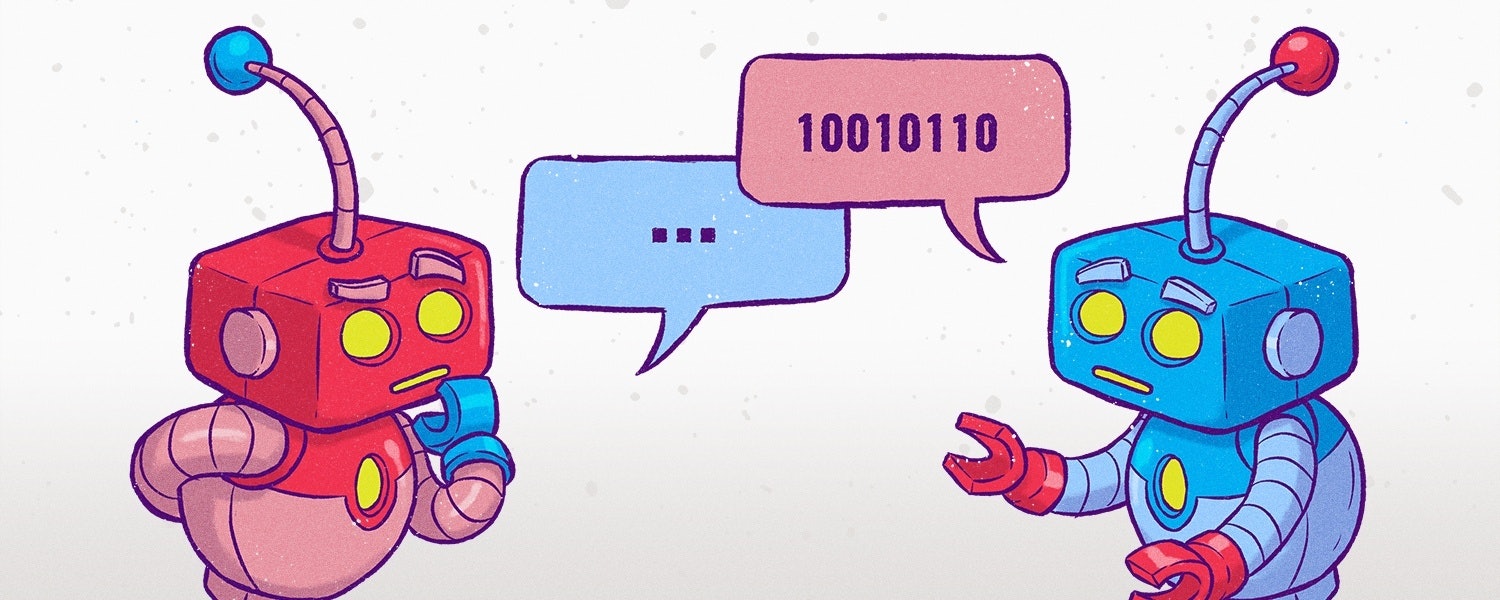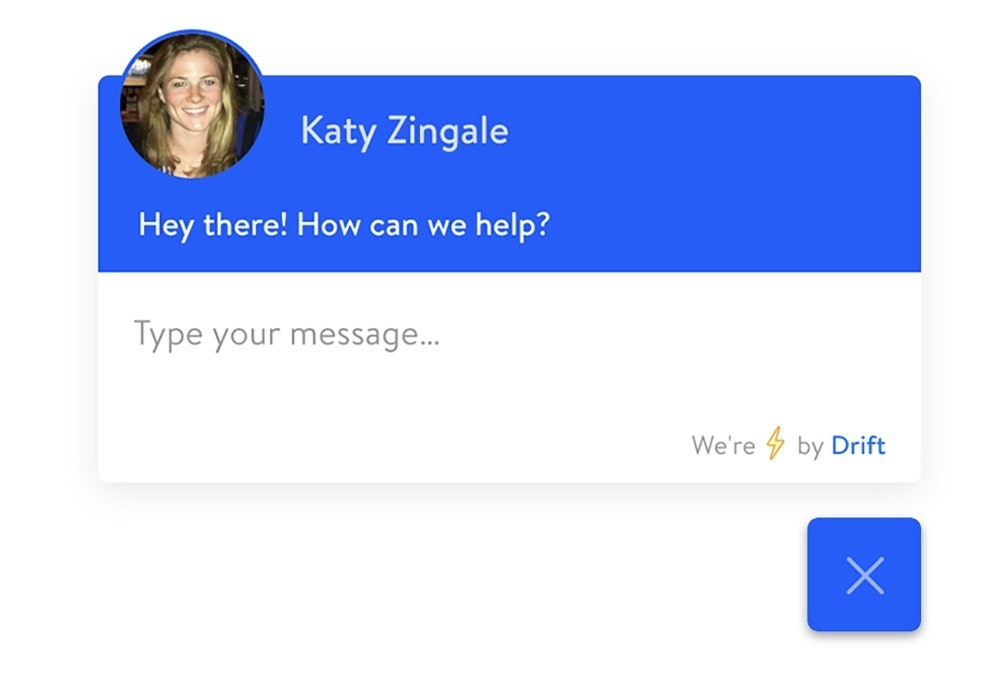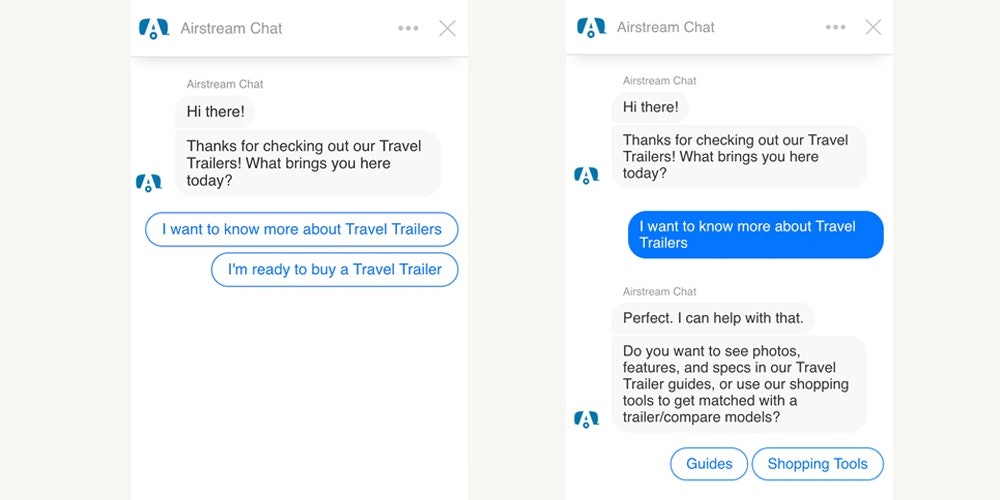The idea of building a chatbot for your website can be intimidating. Artificial intelligence is something that most people feel is simply out of their wheelhouse. The reality is, though, that chatbots aren’t overly complex. They are actually a tool to make your life—and the user’s life—easier.
Chatbots have exploded in popularity among top brands, and there are a few factors that have helped make that happen. The number of people who use messaging apps like WhatsApp, Slack, and Facebook Messenger has skyrocketed over the last few years. Facebook Messenger on its own has over 1.2 billion monthly users. With the growth of people using chat tools in their everyday lives, there is a new marketing strategy that has been gaining traction with a fitting name—conversational marketing.
Conversational marketing takes the approach of making the buying experience more personal. By speaking to visitors as individuals, instead of as a mass of people, your brand has the opportunity to drive engagement, learn more about your audience, and build customer loyalty. When all of those come together, that’s when you see that bottom line start growing. The best way to get off the ground when developing a conversational marketing strategy is to create a chatbot for your website!
What is a Chatbot?
Chatbots are simply computer programs that are tailored to mimic the experience of having a conversation with a real human. A chatbot’s core purpose is to add value by providing the right information, helping to sell products, or solving problems for users.
When developing a chatbot, there are a few options for how it will function:
1. Manual
The quick and easy way to get a chatbot up and running is to manually respond to queries from website visitors. You might be thinking, “that doesn’t sound like a chatbot!” The reality is, manually responding to users’ questions is the most basic version of almost all chatbot technology…so we’re throwing it into the mix.
Manual “bots” can be a good way to test whether or not your users are interested in or willing to engage with such technology (again, some older audiences might not be as inclined to engage versus millennials). The decision to use this approach is dependent on how much daily traffic the website receives because responding to visitors could turn into a full-time job very easily.
2. Automated Options
To make conversations flow more easily, you can provide questions and buttons with options for visitors to choose from. This is a safe approach for automating the process with the least amount of chance for the chatbot to break.
3. Keyword Driven
You can also automate the process by having set responses for queries that contain certain keywords. This method takes the longest to set up and requires lots of monitoring to catch popular queries that need responses constructed for them.
Why would I want to have a chatbot?
Chatbots and conversational marketing might be buzzwords, but they can drive some serious impact for your business. So, why would you ever invest in this marketing technology? Here’s a few reasons:
Generate and Qualify Leads
Chatbots are a great resource to use to qualify website visitors. By uncovering why people are coming to the website, you can either direct them to your top-of-funnel content or connect them directly to a salesperson. This makes sales teams very happy people because they get delivered the most qualified leads without having to ask a number of initial questions that can cause fatigue over time. With certain chatbot solutions (we’re big fans of Drift), you have the capability to even allow prospects to book meetings with your sales team, all through the chatbot.
Help People Find Answers More Quickly
For certain industries, the target audience is not the most tech-savvy group of people. When people struggle to navigate through a website to find the information that is relevant to them, they get frustrated. That is a bad experience that reflects poorly on your brand. Some people prefer to simply get answers to their questions straight from a person—or a chatbot. Chatbots are very helpful for improving customer service. FAQ pages can only hold so much information, and users don’t typically have the time or the patience to scroll through endless pages of instructions.
Capable of Handling High Volume
Work becomes much more efficient when processes are automated. For high-traffic websites, chatbots are able to take countless requests and execute properly every time. Customer service and sales reps only have so much time in the day. Chatbots help take care of the tedious requests that reoccur on a consistent basis while your employees can focus on the higher price tickets. They also work all night long, over the weekends, and on holidays. You can sleep easy at night knowing that your chatbot is still helping you rake in leads.
What to be aware of before investing in chatbots
When developing a chatbot, it is important to define the goals upfront. Are you trying to generate leads? Promote your products? Provide customer service? After you figure out what the purpose of that chatbot will be, then you can maximize the tool to its fullest.
The build process varies depending on which chatbot platform you choose. The part of the process that doesn’t vary—and that you must do before launching—is testing it over and over again. You need to attempt just about every sort of query or interaction that could possibly happen. Your goal when testing is to try to break it. Fix anything you find, then try to break it again. Once you feel like you have tried and fixed everything you can, ask your coworkers and friends to take a shot at breaking it. That is the only way you can really make sure nobody will have a bad experience with your chatbot when it launches.
What Are Your Choices?
There are a number of platforms that you can build a chatbot on. Here are some of the options I feel are best to choose from:
To find more chatbot solutions, check out our Martech Selector Tool, which can help you filter and sort all marketing technology by category and user reviews.
Don’t be afraid of the chatbot. It’s here to help.
Developing a chatbot has never been so easy with the help of the above platforms. That, combined with the incredibly positive business impacts a chatbot provides, has contributed to a surge of big and small brands implementing them on their websites. If you are ready to jump on the bandwagon, I advise you to start small and simple. Get some data on how your audience interacts with your chatbot and consistently make incremental improvements from there. Hopefully someday you can look back and attribute your revenue generating chatbot to this blog!







